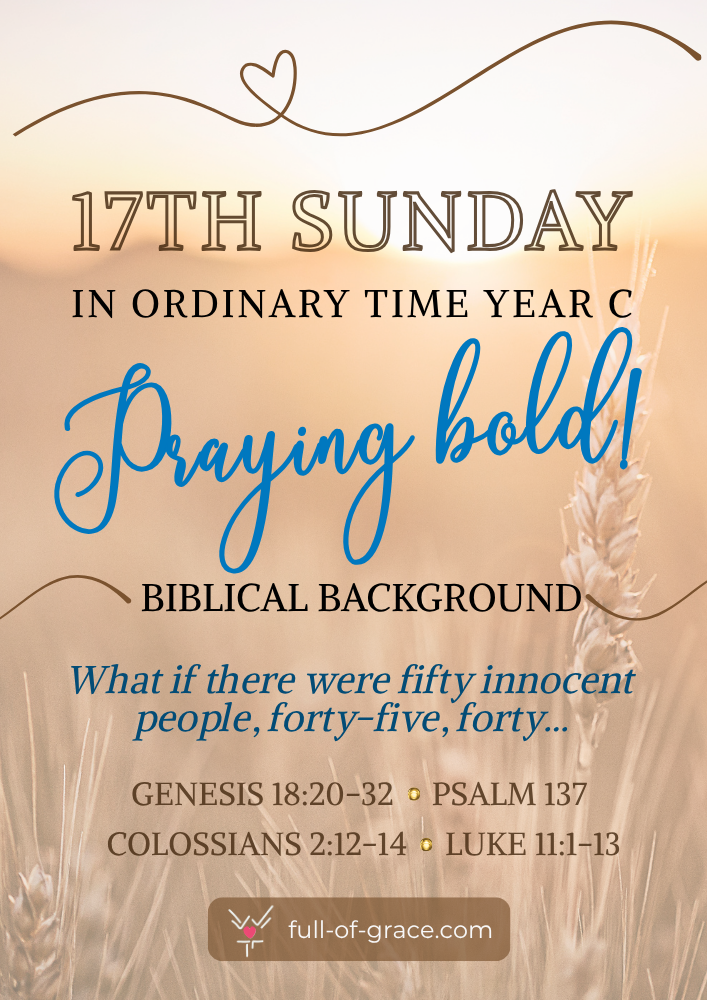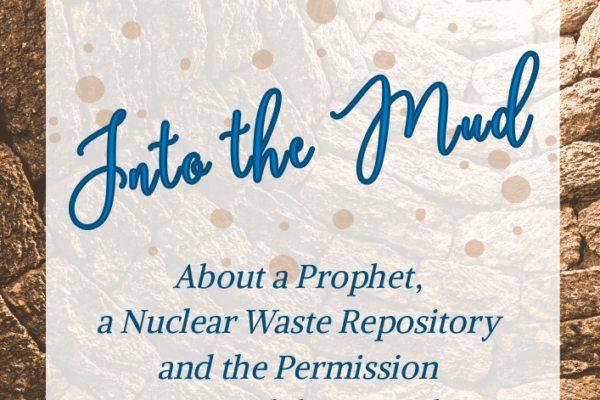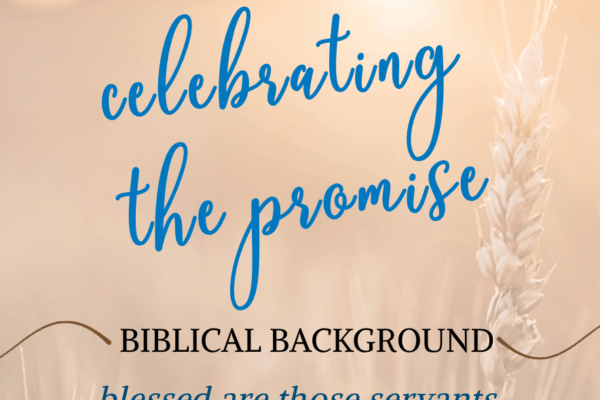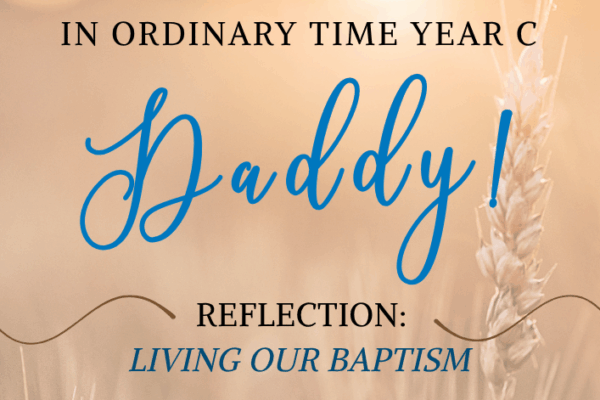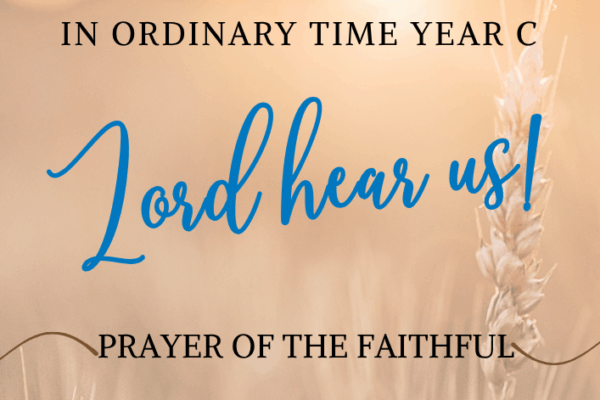Quick Overview: Where Are We in the Bible?
After last week’s readings following Moses through the desert, this Sunday takes us on a dramatic leap backward—almost 2,000 years before Christ—to meet Abraham, the father of our faith. Think of it as jumping from Egypt’s liberation story to the very beginning of God’s chosen people.
First Reading: Genesis 18:20-32
Abraham’s Bold Negotiation with God
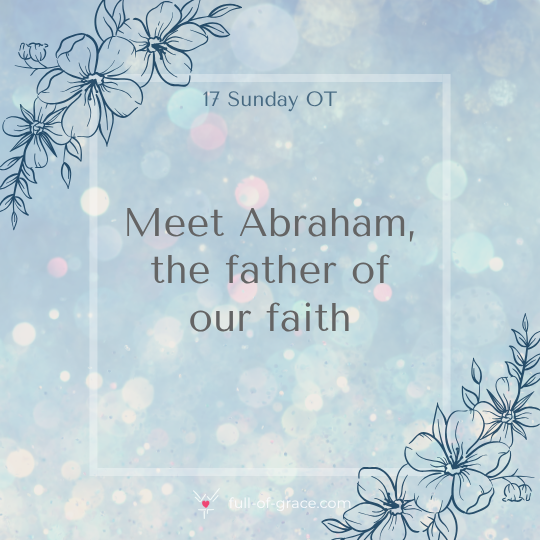
When & Where: Around 2000 BC, on the road from the oak trees of Mamre toward Sodom and Gomorrah—Abraham has walked a few steps away from his tent to accompany his divine visitors.
The Story So Far: Abraham (originally called Abram, meaning “exalted father“) received God’s call at age 75 to leave everything familiar—his homeland of Ur of the Chaldeans in Mesopotamia, his father Terah’s household—and journey to an unknown land. God promised to make him “Abraham” (father of multitudes), but there’s a problem: he and his wife Sarah are still childless after many years of waiting (it takes 25 years between the original promise and Isaac’s birth).
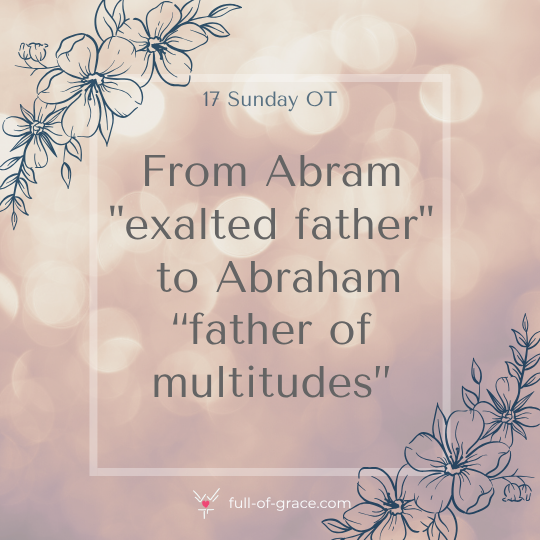
This Scene: We’re still in that long season of waiting—Isaac has not yet been born. Fresh from welcoming three mysterious visitors (angels in disguise) at his tent, Abraham learns that God plans to destroy the wicked cities of Sodom and Gomorrah. But Abraham’s nephew Lot lives there. As he walks with his divine guests toward the cities, Abraham approaches God with extraordinary intimacy and courage: “What if there are 50 righteous people? 45? 40?” He bargains all the way down to 10, and God agrees to each request.
Psalm 138 (137)
A Song of Trust and Thanksgiving
This psalm perfectly captures Abraham’s spirit—praising God’s faithfulness even while making bold requests. It’s the voice of someone who has learned to trust God’s character completely.
Second Reading: Colossians 2:12-14
Paul’s Letter to Struggling Christians

The Community: Colossae was a small city in what’s now Turkey. Paul had never visited this church, but he was concerned about false teachers mixing Christian faith with other religious practices—angel worship, strict food laws, and secret mystical knowledge.
Paul’s Message: We don’t need elaborate religious rituals or special wisdom. In baptism, we’ve already died to our old life and risen with Christ. God has canceled the debt of our sins like erasing writing from a wax tablet.
Gospel: Luke 11:1-13
Jesus Teaches Us to Pray

The Setting: We’re in the heart of Luke’s Gospel, between Jesus’ encounter with Martha and Mary (where Mary chose to sit at his feet) and the growing opposition from religious leaders who will soon accuse him of casting out demons by Satan’s power.
The Moment: After watching Jesus pray, his disciples make a simple request: “Lord, teach us to pray.” What follows is the Lord’s Prayer—but notice how Jesus begins: “Father” (in Aramaic, “Abba”—the intimate word a child uses for daddy).
A Pattern for Prayer
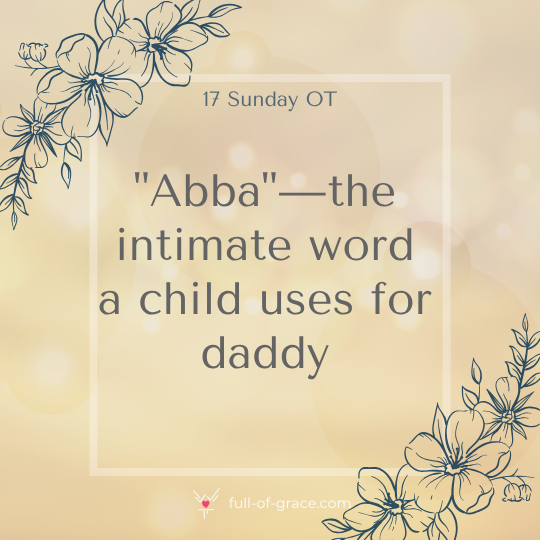
Just as Abraham discovered he could negotiate with God, Jesus teaches us we can bring everything to our heavenly Daddy with confidence. Both Abraham’s intercession and the Lord’s Prayer reveal the same truth: God invites us into intimate conversation, not distant worship. We can approach with our concerns for others (like Abraham pleading for Sodom), our daily needs (give us this day our daily bread), and our deepest fears (deliver us from evil). The God who listened patiently as Abraham bargained from 50 down to 10 righteous people is the same Daddy who delights in our persistent, trusting prayers.

